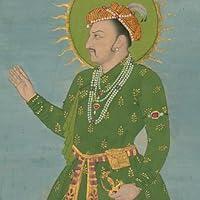
Nur Ud-din Muhammad Jahangir
Sull'autore
Nur Ud-din Muhammad Jahangir was the fourth Mughal emperor, who ruled from 1605 to 1627. He was known for his love of art and nature, and his reign is often marked by a significant cultural flowering in the Mughal Empire. Jahangir was the son of Akbar the Great and Empress Mariam-uz-Zamani. His memoirs, the Tuzuk-i-Jahangiri, provide a unique insight into his thoughts, experiences, and the political landscape of his time. Jahangir's artistic inclinations led to the flourishing of Mughal painting, and he was known for his patronage of artists and architects alike.
Jahangir's reign was also characterized by his attempts to consolidate power while balancing the diverse religious and cultural elements of his empire. He was deeply influenced by his father, Akbar, and continued many of his policies while also introducing his own. His rule is often seen as a time of relative peace and stability, although it was not without its challenges, including conflicts with the nobility and external threats. Jahangir's legacy remains as a ruler who appreciated beauty and sought to document his life and the world around him through his writings and the arts.